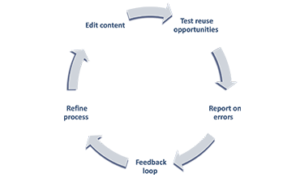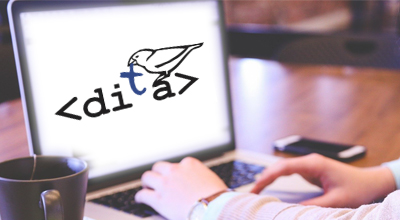Articles
DITA as the standard for technical documentation
DITA (Darwin Information Typing Architecture) is an XML-based document format developed by OASIS in 2005, and since then, it has been available as a free DTD (Document Type Definition). DITA has established itself as a standard in technical documentation, enabling the creation, distribution, and reuse of technical information. Contents can be easily created and managed using topics. The modularity of DITA allows for efficient reuse of topics, which is particularly advantageous in technical communication, where numerous contents need to be repeatedly presented in different media.
Topics as the basis for structured information
The foundation of the standard is formed by the so-called “Topics,” which are used to capture technical information. Topics are small thematic units of information with a title and content that are self-contained and can be modularly reused. Each topic provides the appropriate answer to a specific question. DITA offers various types of topics and an information architecture that allows for sensible collection and organization of topics.
With the DITA Open Toolkit, a production environment is provided, which allows the created XML files to be transformed into various output formats, such as HTML or PDF.
DITA in technical communication
The topic-oriented structuring of content has established itself in technical communication. Topics are the key to success – with topics, information can be created and maintained in a media-independent and standardized manner in one place. Topics can also be created without DITA, but DITA naturally offers all the advantages of XML and those of a standard.
In a technical editorial process, these mentioned topics can now be created in the XML standard and further processed with the DITA Open Toolkit to generate the desired output format. More convenient and suitable, especially for large companies with numerous technical writers, is the use of an appropriate editorial system with a flexible information model.
DITA is successfully used worldwide, only the German-speaking region resists. However, the basic idea is that of a standard: free exchange and shared use of information, independent of systems. For DITA (as for many other standards), this has consequences: sometimes too vague, too little and too much semantics, a learning curve, features that we would rather map through a system than through logic in the file system today.
But that points us in the right direction: using DITA for topic-oriented content structuring, deploying suitable systems for intelligent use, and cleverly limiting the model – information remains modular and exchangeable. The future of technical communication.
Subscribe to the free newsletter from PANTOPIX.
We will happily keep you regularly informed about new articles.

From Legacy Systems to DITA: Case Studies in Successful Migration
This article explores real-world insights and lessons learned from successful migration projects, based on two case studies facilitated by PANTOPIX.

Knowledge Graphs and Large Language Models: the perfect combination!
Out-of-the-box solutions for RAG systems are becoming increasingly widespread. They promise to make a company’s knowledge accessible from documents such as PDFs or Word files using Large Language Models (LLMs) in the form of a chat.

Semantic layers of the Product Information Management Systems (PIM)
Companies rely on Product Information Management (PIM) systems to create, manage, and distribute product information across various channels. We can offer PIM systems software solutions for our industrial clients.
Contact us
Karsten Becke
Managing Director
- karsten.becke@pantopix.com

